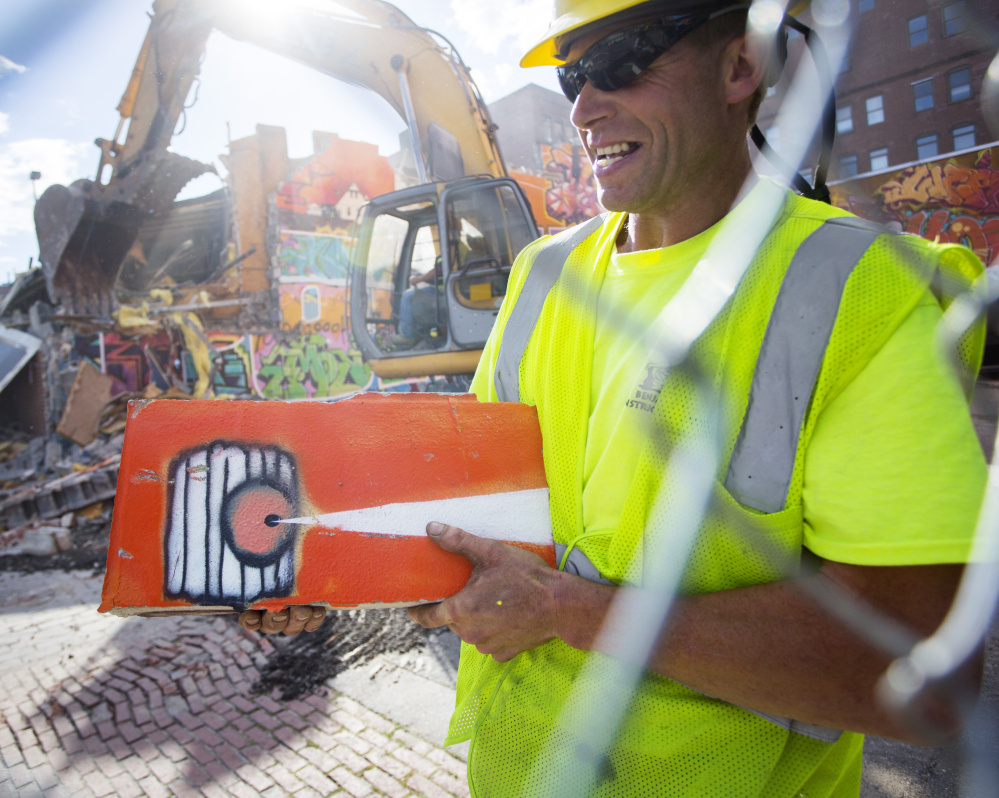With a couple of swipes by an excavator’s jaws, the famed graffiti wall that has adorned the back wall of the Asylum nightclub and concert venue in Portland came tumbling down this week.
The 1,500-square-foot mural at Free and Center streets that once served as an open canvas for urban artists – and a backdrop for countless tourist selfies – was demolished as part of a wider plan to revamp and expand the nearly 20-year-old venue.
Vanessa Romanoff was one of the mourners who came by the construction site to pay her respects and to take one final photo.
“The last time I was here, I took photos of the wall because I didn’t know when I’d see it next,” said Romanoff, 30, of Portland. “I didn’t realize it was going to happen so fast. I hope they find a new canvas for folks.”
Romanoff said she has run into artists who have contributed to the wall’s neon designs over the years, and wondered what they think.
“I can only imagine the mixed feelings involved,” she said. “I guess out with the old and in with the new.”
Another onlooker, Mike Yoder, who works across the street in an office building at 48 Free St., said he watched as tourists recently snapped photos before the demolition began.
“I felt the need to tell them it’s good going getting photos now because it’s going to be gone soon,” he said.
The demolition is part of a $9.1 million expansion for Asylum, its first major modernization since it opened in 1997.
In addition to the nightclub and performance space, Asylum has a sports bar. The new construction will add a second floor to parts of the structure and expand the building’s footprint into the parking lot behind.
The added space will allow the owners to accommodate more seated events, including concerts, private functions, business conferences and weddings.
At its previous size, the concert venue could hold a maximum of 465 people, and attracted a mixture of national and regional acts to headline shows. The venue has also been a staple for various subgenres over the years, including well attended hip-hop and Goth industrial nights.
By contrast, Port City Music Hall holds about 520 people and One Longfellow Square holds about 200. The Cross Insurance Arena seats 6,700 people, and the State Theatre and Merrill Auditorium have capacities of 1,800 and 1,900, respectively.
The owners of the club say a wall on the north side of the building will continue to be available to artists, and they are exploring using removable panels to offer more square footage for art.
Send questions/comments to the editors.





Comments are no longer available on this story